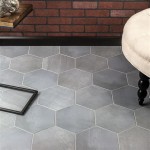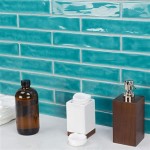Can You Lay Floor Tiles On Concrete? A Comprehensive Guide
Laying floor tiles on concrete is a common practice in both residential and commercial construction. Concrete subfloors offer a stable and durable base for tile installation. However, successful tile installation on concrete requires careful preparation and adherence to established best practices.
This article will explore the various aspects of laying floor tiles on concrete, including essential preparation steps, suitable tile choices, appropriate installation techniques, and potential challenges that may arise. Understanding these factors is crucial for achieving a long-lasting and aesthetically pleasing tiled floor.
Assessing the Concrete Subfloor: Crucial First Steps
Before initiating any tile installation, a thorough assessment of the concrete subfloor is paramount. This evaluation determines whether the existing concrete is suitable for tiling and identifies any necessary remedial actions. Several key aspects need to be considered:
Condition of the Concrete: The concrete surface should be inspected for cracks, spalling, crumbling, or other forms of damage. Minor cracks may be repairable with appropriate patching compounds, while significant structural damage may necessitate more extensive repairs or even replacement of the affected concrete section. The concrete should also be free from any loose debris, paint, sealers, or adhesives that could interfere with the bonding of the tile adhesive.
Levelness and Flatness: Achieving a perfectly level tiled floor requires a flat and level concrete subfloor. Use a long straight edge and level to identify any high or low spots. Minor deviations can be addressed with self-leveling compounds, while more significant unevenness may require grinding or patching to achieve a suitable surface. The acceptable tolerance for flatness usually depends on the size of the tile; larger tiles generally require a flatter surface.
Moisture Content: Concrete is porous and can absorb moisture from the ground or the surrounding environment. Excessive moisture can compromise the adhesion of the tile adhesive and lead to tile cracking or loosening. A moisture test is essential to determine the moisture content of the concrete. Calcium chloride tests or electronic moisture meters are commonly used for this purpose. If the moisture content exceeds the allowable limit specified by the tile adhesive manufacturer, a moisture barrier must be applied before tiling.
Cleanliness: The concrete surface must be thoroughly cleaned to remove any dirt, dust, grease, oil, or other contaminants that could hinder the adhesion of the tile adhesive. Sweeping, vacuuming, and scrubbing with a suitable cleaning solution are typically required. Power washing can be effective for removing stubborn stains and debris, but it is crucial to allow the concrete to dry completely before tiling.
Choosing the Right Tile and Adhesive
The selection of appropriate tile and adhesive is critical for ensuring a successful and durable installation. Several factors should be considered when making these choices:
Tile Type: Various tile types are suitable for concrete subfloors, including ceramic, porcelain, natural stone (such as granite, marble, and slate), and quarry tiles. The choice depends on the desired aesthetic, budget, and intended use of the space. Porcelain tiles are generally preferred for high-traffic areas due to their durability and water resistance. Natural stone tiles often require sealing to protect them from stains and moisture damage.
Tile Size: The size of the tile can influence the difficulty of installation and the overall appearance of the floor. Larger tiles can create a more seamless look but require a flatter subfloor and more precise installation. Smaller tiles are more forgiving of minor imperfections in the subfloor and can be easier to work with in complex layouts.
Tile Adhesive (Mortar): The type of adhesive used is crucial for ensuring a strong and lasting bond between the tile and the concrete subfloor. Modified thin-set mortars are commonly used for most tile installations on concrete. These mortars contain polymers that enhance their adhesion, flexibility, and water resistance. It is essential to select a mortar that is specifically designed for the type of tile being used and the substrate it is being applied to. Consult the tile and mortar manufacturers' recommendations for compatibility and application guidelines.
Grout Selection: Grout fills the spaces between the tiles and provides a watertight seal. The choice of grout depends on the tile type, joint width, and desired aesthetic. Cement-based grouts are commonly used for most tile installations. Epoxy grouts offer superior stain resistance and durability but are more expensive and can be more difficult to install. Selecting a grout color that complements the tile color can enhance the overall appearance of the floor.
Proper Installation Techniques for Lasting Results
Following proper installation techniques is essential for achieving a durable and aesthetically pleasing tiled floor. These techniques encompass several key steps:
Layout Planning: Before applying any adhesive, carefully plan the layout of the tiles to ensure a balanced and visually appealing pattern. Start by determining the center point of the room and laying out the tiles from that point outwards. Adjust the layout as needed to avoid small slivers of tile along the walls, which can look unsightly. Consider using spacers to maintain consistent grout joint widths.
Applying the Adhesive: Use a notched trowel to apply the tile adhesive to the concrete subfloor. The size of the notches on the trowel should be appropriate for the size and type of tile being used. Apply the adhesive in small sections, working quickly to prevent it from drying out. Comb the adhesive with the notched trowel to create ridges that will help to ensure proper bonding with the tile. Use a consistent angle and pressure when combing the adhesive to achieve uniform coverage.
Setting the Tiles: Carefully place each tile onto the adhesive, pressing down firmly and twisting slightly to ensure good contact. Use a level to check that the tiles are aligned and level with each other. Insert spacers between the tiles to maintain consistent grout joint widths. Remove any excess adhesive from the tile surface immediately.
Curing the Adhesive: Allow the adhesive to cure for the recommended time specified by the manufacturer before grouting. This curing period allows the adhesive to fully harden and develop its bond strength. Avoid walking on the tiles during this time.
Grouting the Tiles: Once the adhesive has cured, remove the spacers and clean the grout joints. Mix the grout according to the manufacturer's instructions and apply it to the grout joints using a grout float. Work the grout into the joints, ensuring that they are completely filled. Remove any excess grout from the tile surface with a damp sponge. Allow the grout to dry slightly and then polish the tile surface with a clean cloth to remove any remaining grout haze.
Sealing the Grout (Optional): Sealing the grout can help to protect it from stains and moisture damage. Apply a grout sealer according to the manufacturer's instructions. Allow the sealer to dry completely before using the floor.
Expansion Joints: In larger areas, expansion joints should be incorporated into the tiled floor to accommodate movement caused by temperature and humidity changes. These joints are typically filled with a flexible sealant. The placement and spacing of expansion joints should be determined in accordance with industry standards and the recommendations of the tile and sealant manufacturers. These joints are crucial for preventing cracking and buckling of the tiled floor.
Acclimation of Tile: Before beginning any installation, allow the tiles to acclimate to the room's temperature and humidity for at least 24 to 48 hours. This is especially important for natural stone tiles, as they can expand or contract due to temperature variations, which could affect the final installation.
Back Buttering: For larger tiles, or when installing on uneven concrete, back buttering the tiles is recommended. This involves applying a thin layer of thin-set mortar to the back of the tile, in addition to the mortar applied to the concrete subfloor. Back buttering helps to ensure full contact between the tile and the substrate, preventing voids and weak spots.
Protecting the Finished Floor: After the grout has cured, protect the finished floor from damage by covering it with cardboard or other protective materials during construction or renovation activities. This prevents scratches, stains, and impact damage to the newly installed tiles.
:max_bytes(150000):strip_icc()/can-you-install-tile-directly-on-concrete-1822600-04-458f7bb6c78348c1835cf8054ef36553.jpg?strip=all)
How To Install Tile Over Concrete
How To Tile Onto Concrete Floors Porcelain Super
How To Lay Floor Tiles On Concrete Stonesuper

How To Lay Floor Tiles On Concrete Welcome The Rubi Tools Blog

Tiling Over A Ed Concrete Slab Fine Homebuilding

How To Install Ceramic Tiles On Concrete Floor Tile Installation
:max_bytes(150000):strip_icc()/can-you-install-tile-directly-on-concrete-1822600-01-8a89ceab1a274fb8ac81890ab7fc6b1b.jpg?strip=all)
How To Install Tile Over Concrete

Can You Lay Tiles Onto Damp Concrete Atlas Ceramics

Can You Install Ceramic Tile On Top Of Vinyl Flooring 2024 Today S Homeowner

Can You Lay Outdoor Tiles Over Concrete Premier Porcelain
Related Posts








